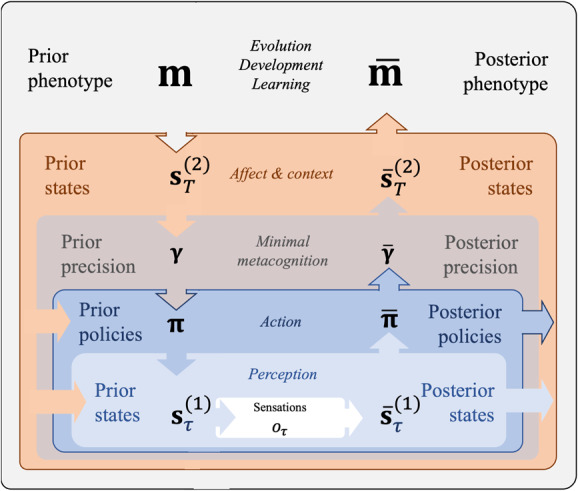Figure 10:

A schematic breakdown of the nested processes of Bayesian inference in terms of the affective agent presented in this letter. At each level, top-down prior beliefs change along a gradient ascent on bottom-up model evidence (negative ), moving the entire hierarchy toward mutually constrained posteriors. Perception (light blue; M in Figure 1 and Table 2) provides evidence for beliefs over policies (blue; M in Figure 2 and Table 3) and higher-level contextual states. Action outcomes inform subjective fitness estimates through affective charge (brown; M in Figure 3 and Table 4), which provides evidence to inform valence beliefs (orange). These nested processes of inference unfold continuously in each individual phenotype throughout development and learning (e.g., neural Darwinism, natural selection; see Campbell, 2016; Constant et al., 2018). In turn, the reproductive success of each phenotype provides model evidence that shapes the evolution of a species.
